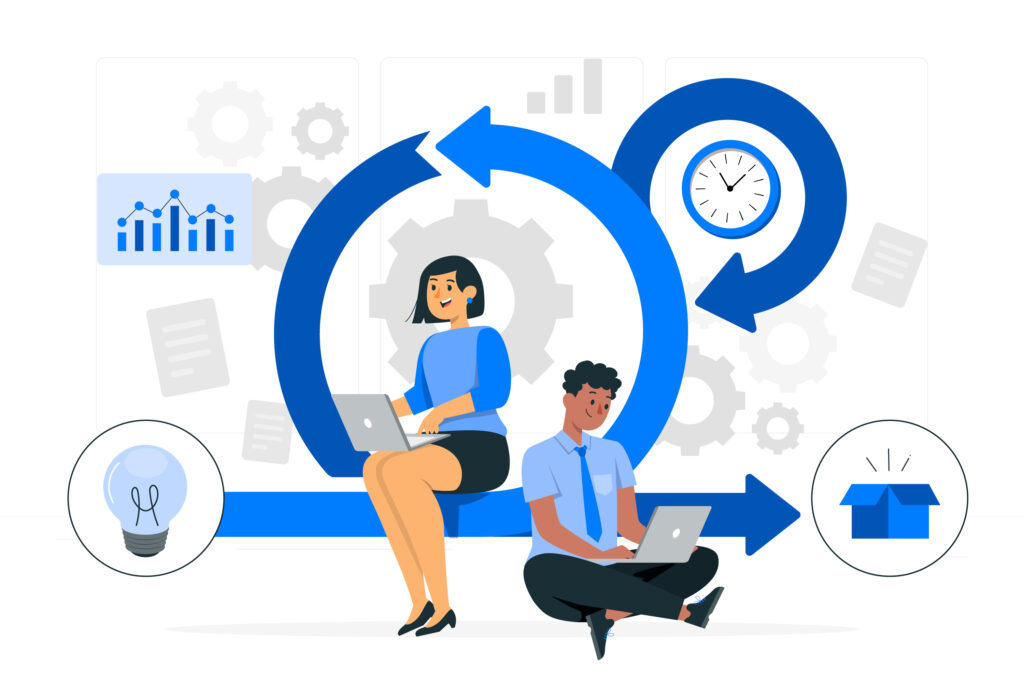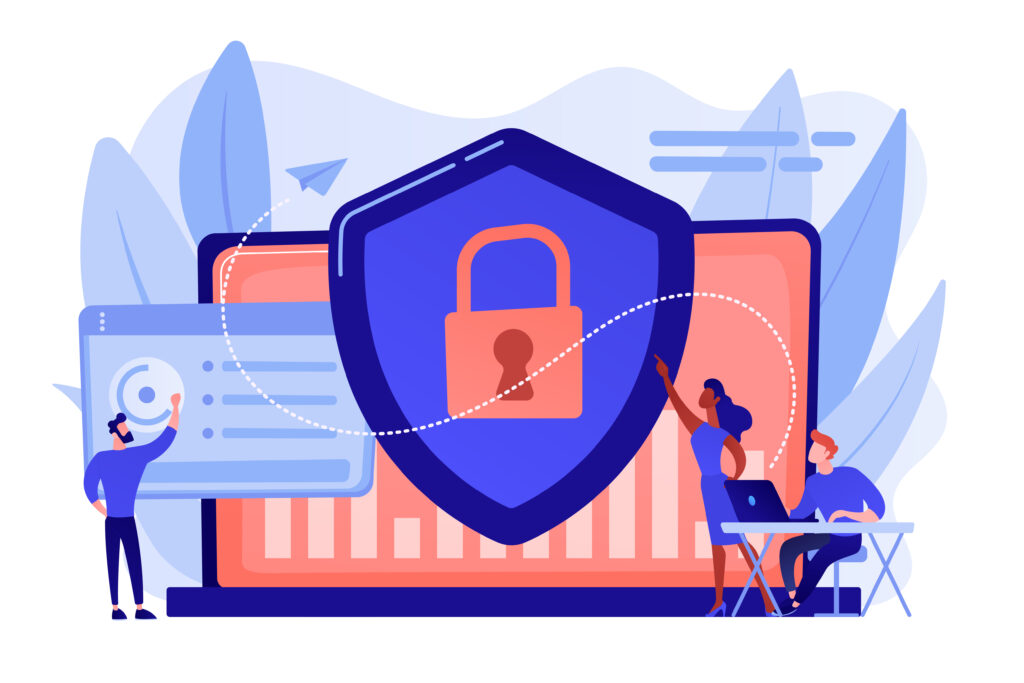What is the Secure Software Development Life Cycle (SSDLC)?

Agile software development and DevOps are two separate but complementary approaches in the software The Secure Software Development Life Cycle (SSDLC) is a methodical approach to software development that embeds security into every phase of the process. Rather than being an afterthought, security is considered from the initial stages of planning all the way through deployment and ongoing maintenance.
Key Characteristics of SSDLC
Security Integration:
In the Secure Software Development Life Cycle (SSDLC), security is not treated as a separate phase but is woven into every stage of the software development process. This integration spans from initial requirements gathering through design, coding, testing, deployment, and maintenance. By embedding security throughout, the SSDLC ensures that security considerations are inherent to the development process, rather than being retroactively applied.
Comprehensive Approach:
SSDLC advocates for a collaborative effort involving various teams, such as development, quality assurance (QA), security, and operations. This multi-disciplinary approach ensures that security is evaluated from diverse perspectives, addressing potential vulnerabilities comprehensively and improving the overall security posture of the software.’
Risk Management:
An essential feature of SSDLC is its focus on continuous risk management. Regular risk assessments and mitigation strategies are employed to identify and address potential security vulnerabilities early in the development cycle, thereby minimizing the risk of security breaches.
Compliance and Standards:
SSDLC aligns with industry standards, best practices, and regulatory requirements. This alignment ensures that security measures not only meet but exceed compliance benchmarks, safeguarding against both internal and external threats.
Ongoing Improvement:
The SSDLC is an iterative process characterized by continuous feedback loops. This iterative nature allows for ongoing refinement and enhancement of security measures, ensuring they remain current and effective in the face of evolving threats and technological advancements.
Importance Of SSDLC

Prevents Vulnerabilities:
By integrating security from the outset of the development process, the Secure Software Development Life Cycle (SSDLC) helps to proactively identify and address potential vulnerabilities. This early intervention prevents security weaknesses that could otherwise lead to significant breaches or data leaks.
Ensures Regulatory Compliance:
SSDLC aligns with industry standards and regulatory requirements, ensuring that all necessary compliance measures are met. This adherence not only helps in avoiding legal repercussions but also promotes trust and credibility with stakeholders.
Cost Efficiency:
Incorporating security measures early in the development process is cost-effective. It reduces the need for expensive fixes and patches after deployment, which can be far more costly and disruptive. By addressing security issues before they become problems, SSDLC helps in managing and minimizing overall costs.
Improves Software Quality:
A primary benefit of SSDLC is the enhancement of software quality. By focusing on security throughout the development lifecycle, the final product is less likely to have security flaws, resulting in more reliable and robust software.
Enhances Reputation:
Adopting SSDLC demonstrates a proactive commitment to security, which positively impacts the organization’s reputation. It signals to clients and partners that the company values and prioritizes the protection of sensitive information, thereby building greater trust and confidence.
Phases of SSDLC

Requirements Planning
- Identify Security Needs: Determine the project’s security requirements, including identifying potential vulnerabilities and how to mitigate them.
- Stakeholder Input: Engage security teams during requirements gathering to ensure security is prioritized from the beginning.
- Define Security Baseline: Set a baseline for the necessary security protections the software must include.
Design
- Secure Architecture: Develop the software architecture with security in mind, following secure coding standards and current security guidelines.
- Risk Management: Address risk management, legal restrictions, and potential social engineering vulnerabilities in the design phase.
- Security Review: Conduct a security review of the design to identify vulnerabilities early.
Development
- Secure Coding Practices: Apply secure coding standards and utilize up-to-date programming languages that meet modern security requirements.
- Automated Tools: Use automated tools, such as static analysis, to provide real-time feedback on code security.
- Secure Components: Choose secure open-source and third-party components to minimize the risk of vulnerabilities.
Testing
- Security Testing: Perform security testing concurrently with development, including code reviews and vulnerability assessments.
- Feedback Loop: Maintain an active feedback loop between development and security teams to resolve security issues quickly.
Deployment and Maintenance
- Automated Deployment: Automate deployment processes as much as possible while ensuring security tools can handle the pace of deployment.
- Continuous Monitoring: Monitor live systems continuously to detect and respond to new security threats.
- Regular Updates: Frequently update and configure security settings for cloud environments and related resources.
- Feedback and Communication: Keep open lines of communication between security and development teams to quickly address any security concerns.
Best Practices to Secure the SDLC

Securing the Software Development Life Cycle (SDLC) involves strategic planning, team collaboration, and the adoption of advanced tools and methodologies. Here are some essential best practices to ensure the SDLC remains secure:
1: Integration of Security
Embed Security in Every Phase:
Incorporate security into all stages of the SDLC, from requirements planning through to deployment and maintenance. This approach ensures security considerations are part of the software from the outset, rather than being an afterthought.
2: Collaboration
Cross-Functional Teams:
Foster collaboration among development, security, and operations teams to address security issues throughout the lifecycle. This teamwork helps identify and mitigate potential vulnerabilities early in the development process.
3: Automation

Use Automated Tools:
Implement automated tools for static and dynamic analysis, as well as security scanning, to identify security risks and vulnerabilities. Automation provides real-time feedback, facilitating quicker remediation and minimizing the risk of security breaches.
4: Continuous Improvement
Regular Updates and Checks
Maintain ongoing security efforts with frequent checks and updates to ensure the software remains secure after deployment. This includes monitoring for vulnerabilities, updating software, and implementing incident response procedures.
6: Secure Coding Standards
Implement Secure Coding Standards:
Develop and enforce secure coding standards and frameworks. Ensure that developers are knowledgeable about and comply with these standards to minimize common vulnerabilities such as SQL injection and cross-site scripting (XSS).
7: Regular Security Reviews
Conduct Regular Security Reviews:
Perform periodic security reviews and audits to uncover and address potential vulnerabilities early. This should include code reviews, penetration testing, and vulnerability scanning for misconfigurations and weaknesses.
Additional Best Practices
- Threat Modeling: Perform threat modeling during the design phase to identify potential attack vectors and define how the software will defend against them.
- Secure Software Development Policy: Develop a comprehensive policy that sets clear expectations and requirements for secure software development. This policy should include guidelines for security practices, risk management, and adherence to industry standards.
- Secure Deployment: Configure servers and environments securely, enforce access controls, and follow secure deployment practices to minimize potential vulnerabilities.
- Monitoring and Logging: Continuously monitor active systems for security-related events and implement logging to quickly detect and respond to security incidents.
- Access Control: Apply strict access controls based on the principle of least privilege, ensuring that only authorized individuals have access to sensitive areas of the software and its development environment.
[Want to learn more about best WordPress CRM Plugins? Click here to reach us.]
Conclusion
The Secure Software Development Life Cycle (SSDLC) represents a crucial strategy for embedding security throughout every phase of software development. By integrating security from requirements planning to deployment and maintenance, organizations can proactively address vulnerabilities and mitigate risks. A successful SSDLC involves a comprehensive approach that includes cross-functional collaboration, automation, continuous improvement, and developer education. Implementing best practices such as threat modeling, secure deployment, and stringent access controls further strengthens the security of the software.
Incorporating SSDLC not only ensures compliance with regulatory requirements and reduces costs related to post-deployment security issues but also enhances software quality and boosts organizational reputation. For organizations seeking expert support in implementing a secure development lifecycle, Bobcares offers specialized software development services designed to integrate these security practices seamlessly. Bobcares’ support helps ensure that your software is robust, resilient, and prepared to handle evolving security threats, providing peace of mind in today’s dynamic digital landscape.







0 Comments